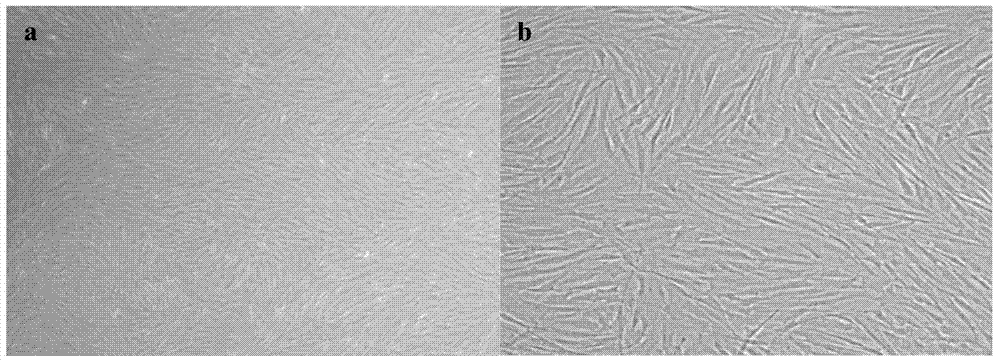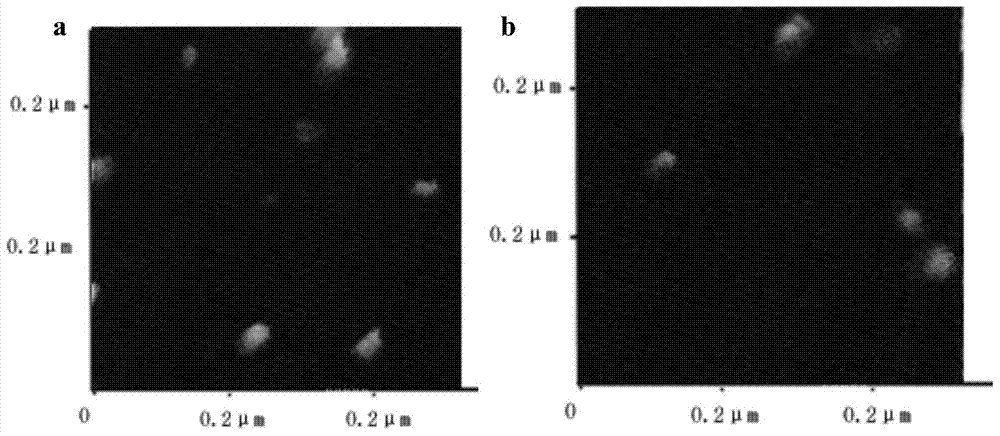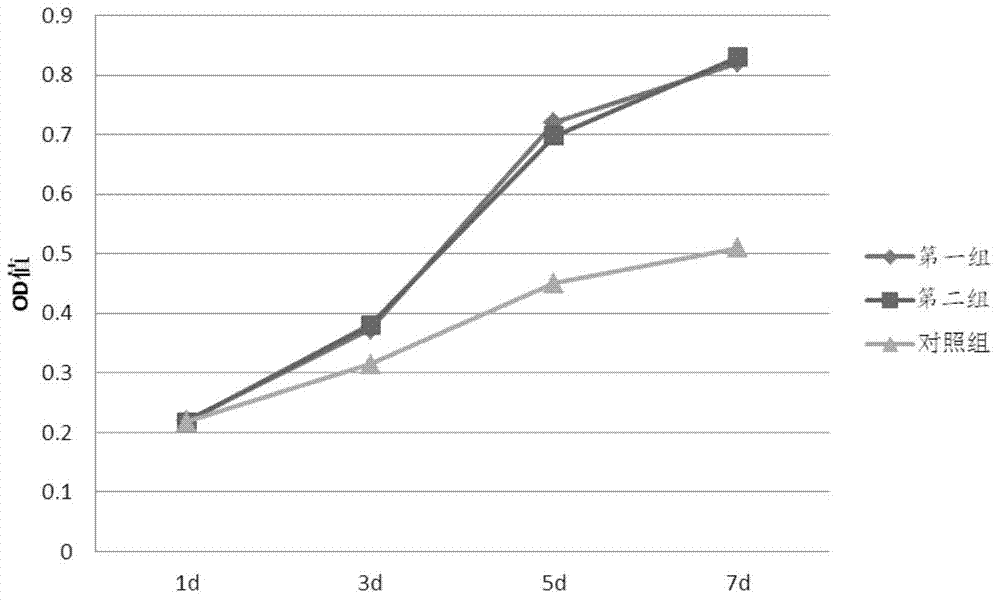Method for preparing exosome freeze-dried powder of human amniotic mesenchymal stem cells
A technology of mesenchymal stem cells and human amniotic membrane, applied in the field of stem cells, can solve the problems of unstable source of exosomes, stable and controllable product quality, etc., and achieve the effect of maintaining shape and activity and simple operation
- Summary
- Abstract
- Description
- Claims
- Application Information
AI Technical Summary
Problems solved by technology
Method used
Image
Examples
Embodiment 1
[0034] Example 1. Culture of human amniotic mesenchymal stem cells and collection of culture supernatant
[0035] 1. Culture of human amniotic mesenchymal stem cells:
[0036] Well-growing human amniotic mesenchymal stem cells were taken, cultured in serum-free medium, digested and passaged with 0.25% trypsin, passed to the P2 generation, and when they grew to a confluence of 80%, the culture medium was removed, washed three times with PBS, and added 1640 basal medium, collect the culture supernatant every day, and replace it with fresh 1640 medium, collect and culture continuously for 3 to 5 days, then collect the culture supernatant for exosome extraction. Among them, the cell state used to collect the culture supernatant is as follows: figure 1 shown.
[0037] 2. Extraction of exosomes (unless otherwise specified, the whole extraction process is carried out at 4°C):
[0038] (1), centrifuge all collected culture supernatants at 300 g for 10 min, retain the supernatant, dis...
Embodiment 2
[0043] Example 2. Preparation of human amniotic mesenchymal stem cell exosome freeze-dried powder:
[0044] Take the exosomes purified in Example 1, add trehalose to a final concentration of 10%, mix well, pass through a 0.22 μm filter membrane, divide and store in an ultra-low temperature refrigerator (-80°C) for 12 hours, and then transfer the sample to Freeze-dried in a vacuum freeze-drying chamber, the vacuum degree of freeze-drying was kept at 10 Pa, and the temperature was frozen at -50°C for 12 to 48 hours to obtain the human amniotic mesenchymal stem cell exosome freeze-dried powder.
Embodiment 3
[0045] Example 3. Morphological detection of exosomes:
[0046] The first group was stored in an ultra-low temperature refrigerator (-80° C.); the second group (the human amniotic mesenchymal stem cell exosome freeze-dried powder prepared in Example 2) was stored at room temperature. One month later, the first group was thawed for detection, and the second group was reconstituted with PBS buffer solution for detection.
[0047] The morphology of exosomes was observed by atomic force microscopy. After the exosomes to be detected were diluted in a certain proportion with pure water, 10 μL of the diluted solution was added dropwise to the surface of the newly dissociated mica. After standing for about 30 minutes, rinse carefully with pure water and blow dry with nitrogen. AFM imaging was performed using the amplitude-modulated tapping mode (resonance frequency 56 kHz, elastic coefficient 0.24 N / m). see results figure 2 .
[0048] Depend on figure 2 The results show that t...
PUM
 Login to View More
Login to View More Abstract
Description
Claims
Application Information
 Login to View More
Login to View More - R&D
- Intellectual Property
- Life Sciences
- Materials
- Tech Scout
- Unparalleled Data Quality
- Higher Quality Content
- 60% Fewer Hallucinations
Browse by: Latest US Patents, China's latest patents, Technical Efficacy Thesaurus, Application Domain, Technology Topic, Popular Technical Reports.
© 2025 PatSnap. All rights reserved.Legal|Privacy policy|Modern Slavery Act Transparency Statement|Sitemap|About US| Contact US: help@patsnap.com



